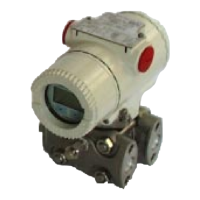2600T SERIES | PRESSURE TRANSMITTERS | OI/266/FF-EN REV. E
23
Transmitter housing rotation
To improve field access to the wiring or the visibility of the
optional LCD meter, the transmitter housing may be rotated
through 360° and fixed in any position. A stop prevents the
housing from being turned too far. In order to proceed with
housing rotation, the housing stop tang-screw has to be
unscrewed by approximately 1 rotation (do not pull it out) and,
once the desired position has been reached, retightened.
Figure 25: Housing rotation
Impulse piping connection for standard
instruments
In order for the pipes to be laid correctly, the following points
must be observed:
• The measuring pipes must be as short as possible and free
from sharp bends.
• Lay the impulse piping in such a way that no deposits
accumulate in them. Gradients should not be less than
approx. 8% (ascending or descending).
• The measuring pipes should be blown through with
compressed air or, better yet, flushed through with the
measuring medium before connection.
• Where a fluid/vaporous measuring medium is being used, the
liquid in both measuring pipes must be at the same level. If a
separating liquid is being used, both measuring pipes must
be filled to the same level (266Dx and 266Mx).
• Although it is not absolutely necessary to use balancing
vessels with vaporous measuring media, measures must be
taken to prevent steam entering the measuring chambers of
the measuring equipment (266Dx and 266Mx).
• It may be necessary to use condensate vessels, etc., with
small spans and vaporous measuring media (266Dx and
266Mx).
• If using condensate vessels (steam measurement), you should
ensure that the vessels are at the same elevation in the
differential pressure piping (266Dx and 266Mx).
• As far as possible, keep both impulse lines at the same
temperature (266Dx and 266Mx).
• Completely depressurize the impulse lines if the medium is a
fluid.
• Lay the impulse lines in such a way that gas bubbles (when
measuring fluids) or condensate (when measuring gases) can
flow back into the process line.
• Ensure that the impulse lines are connected correctly (High
and Low pressure sides connected to measuring equipment,
seals...).
• Make sure the connection is tight.
• Lay the impulse line in such a way that prevents the medium
from being blown out over the measuring equipment.
CAUTION
Process leaks may cause harm or result in death. Install and
tighten process connectors and all accessories (including
manifolds) before applying pressure. In case of toxic or
otherwise dangerous process fluid, take any precautions as
recommended in the relevant Material Safety Data Sheet
when draining or venting. Use only a 12 mm (15/32“)
hexagonal spanner to tighten the bracket bolts.

